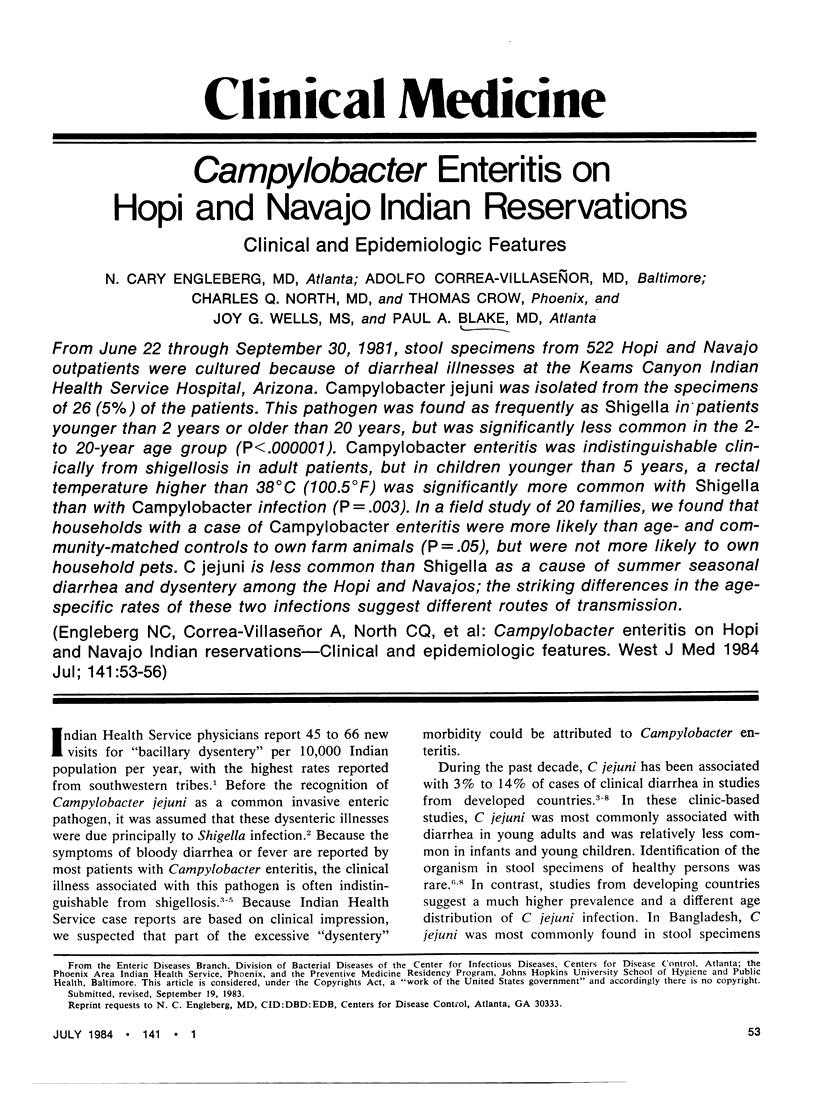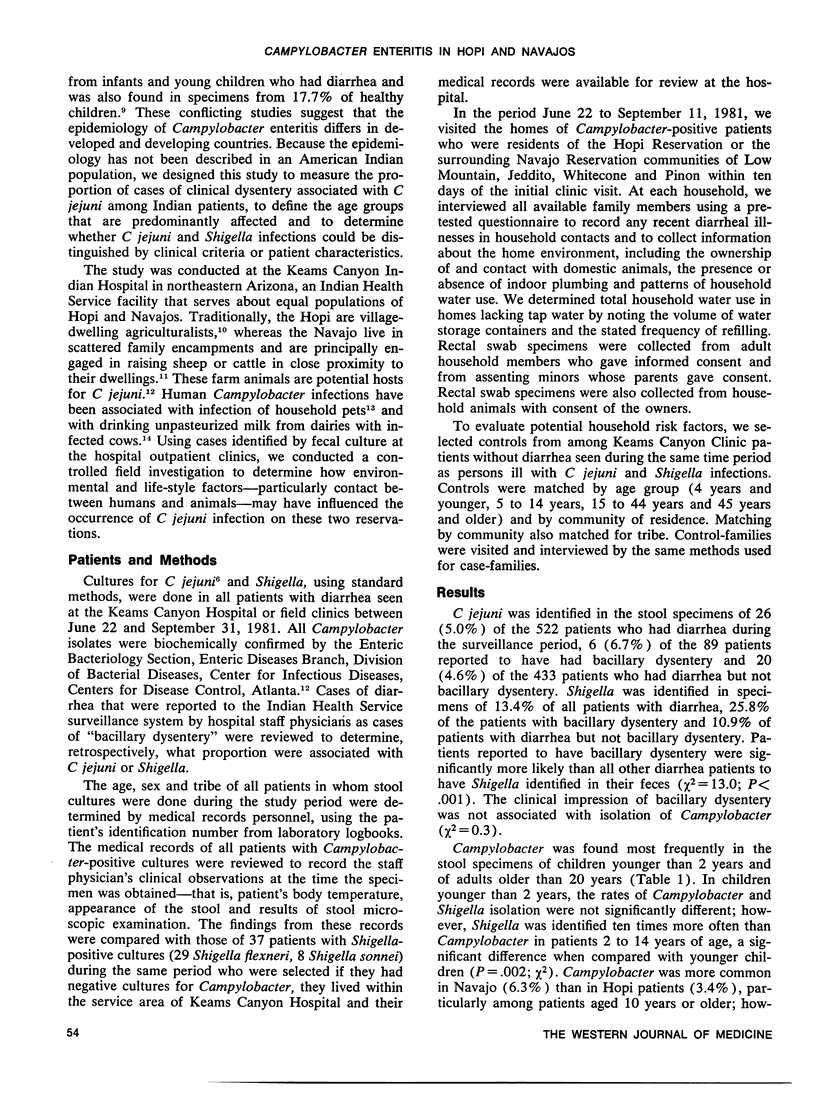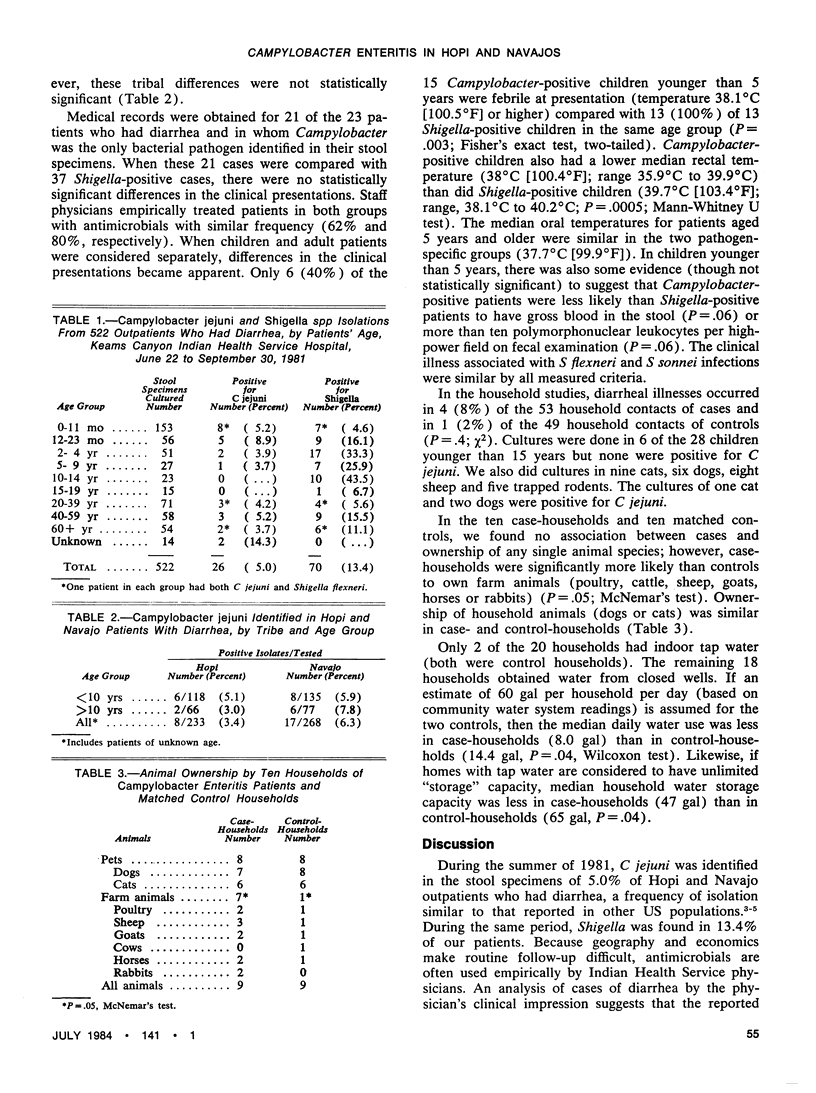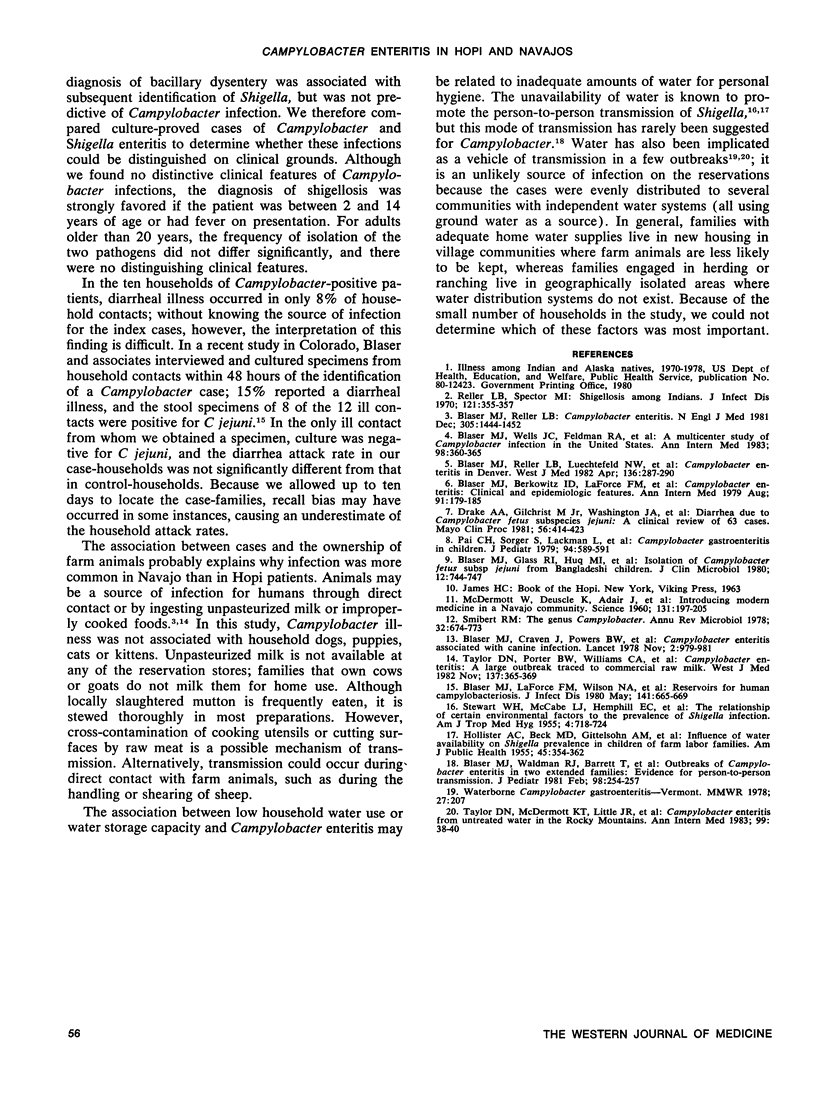Abstract
From June 22 through September 30, 1981, stool specimens from 522 Hopi and Navajo outpatients were cultured because of diarrheal illnesses at the Keams Canyon Indian Health Service Hospital, Arizona. Campylobacter jejuni was isolated from the specimens of 26 (5%) of the patients. This pathogen was found as frequently as Shigella in patients younger than 2 years or older than 20 years, but was significantly less common in the 2 to 20-year age group (P<.000001). Campylobacter enteritis was indistinguishable clinically from shigellosis in adult patients, but in children younger than 5 years, a rectal temperature higher than 38°C (100.5°F) was significantly more common with Shigella than with Campylobacter infection (P=.003). In a field study of 20 families, we found that households with a case of Campylobacter enteritis were more likely than age- and community-matched controls to own farm animals (P=.05), but were not more likely to own household pets. C jejuni is less common than Shigella as a cause of summer seasonal diarrhea and dysentery among the Hopi and Navajos; the striking differences in the age-specific rates of these two infections suggest different routes of transmission.
Full text
PDF





